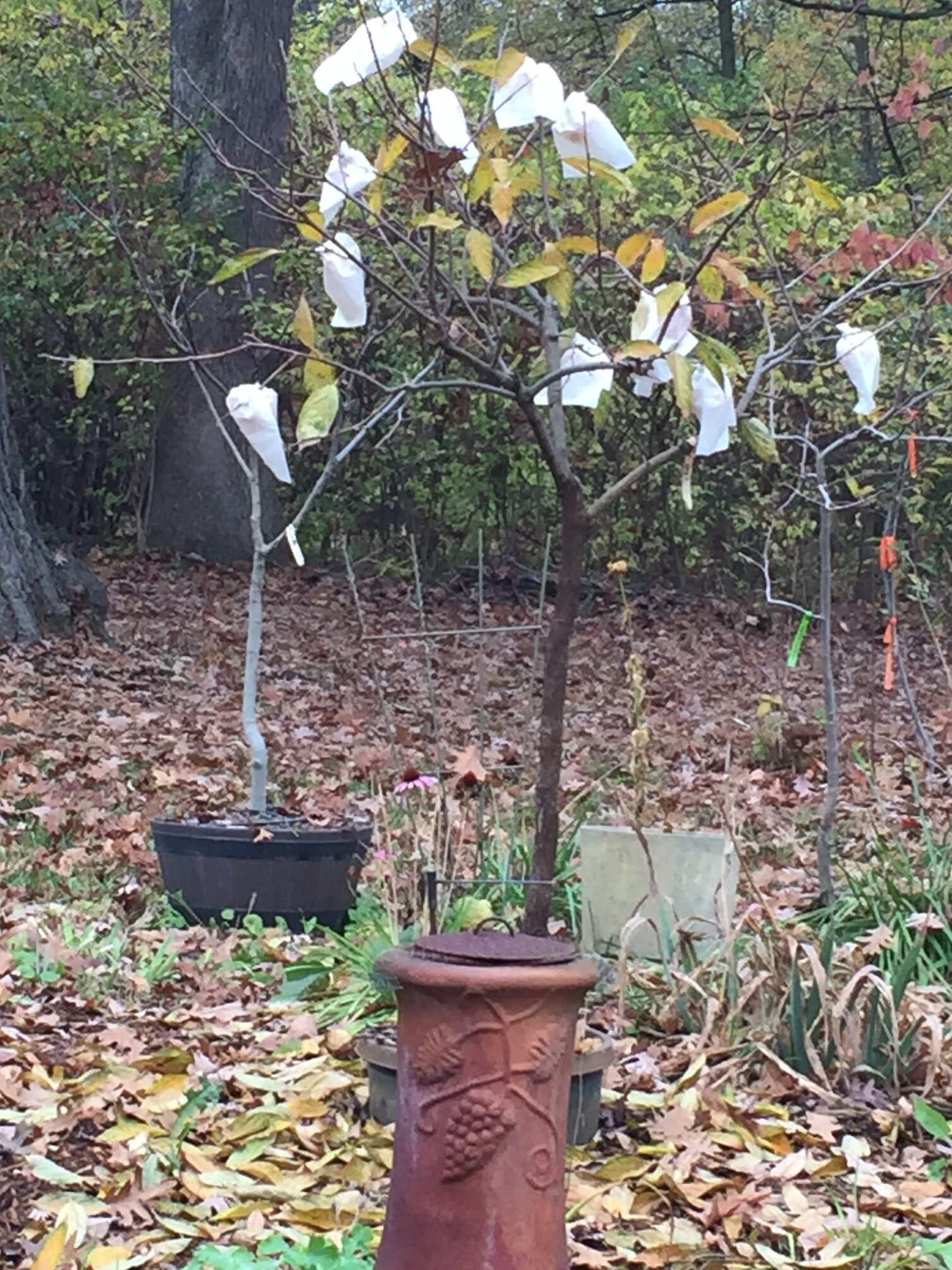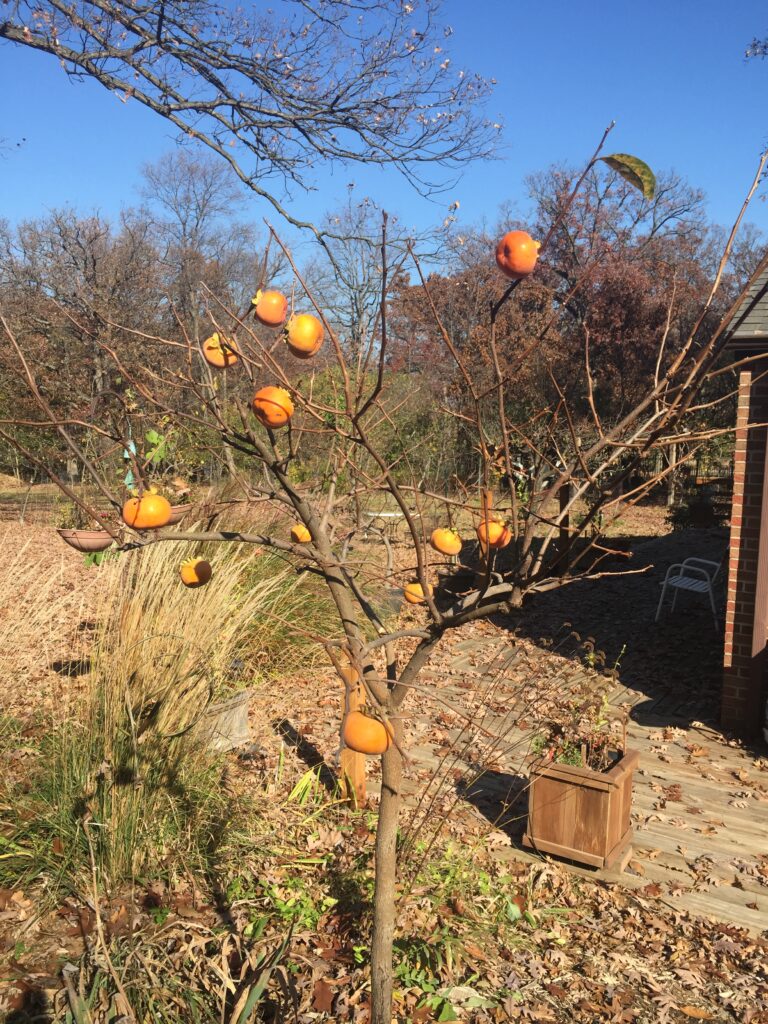American Persimmons (Diospyros virginiana)
Asian Persimmons (Diospyros kaki)
American Persimmons (Diospyros virginiana)
https://en.wikipedia.org/wiki/Diospyros_virginiana
American Persimmons are native to North America and are found mainly east of the Mississippi in forested regions. Fruits of most varieties tend to be astringent, but can be quite sweet with full bodied flavor.
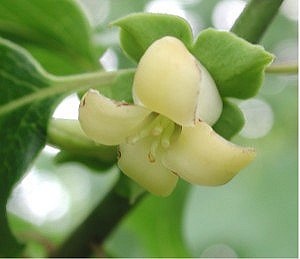
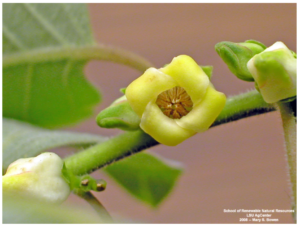
The common persimmon is a generally small to medium sized tree, usually 30 to 80 feet (9 to 24 m) in height, but reaching 115 feet (35 m) west of the southern Mississippi.[8] It has a short, slender trunk and spreading, often pendulous branches, which form a broad or narrow, round-topped canopy. The roots are thick, fleshy and stoloniferous. The species has a shrubby growth form.[8] The plant has oval entire leaves, and unisexual flowers on short stalks.
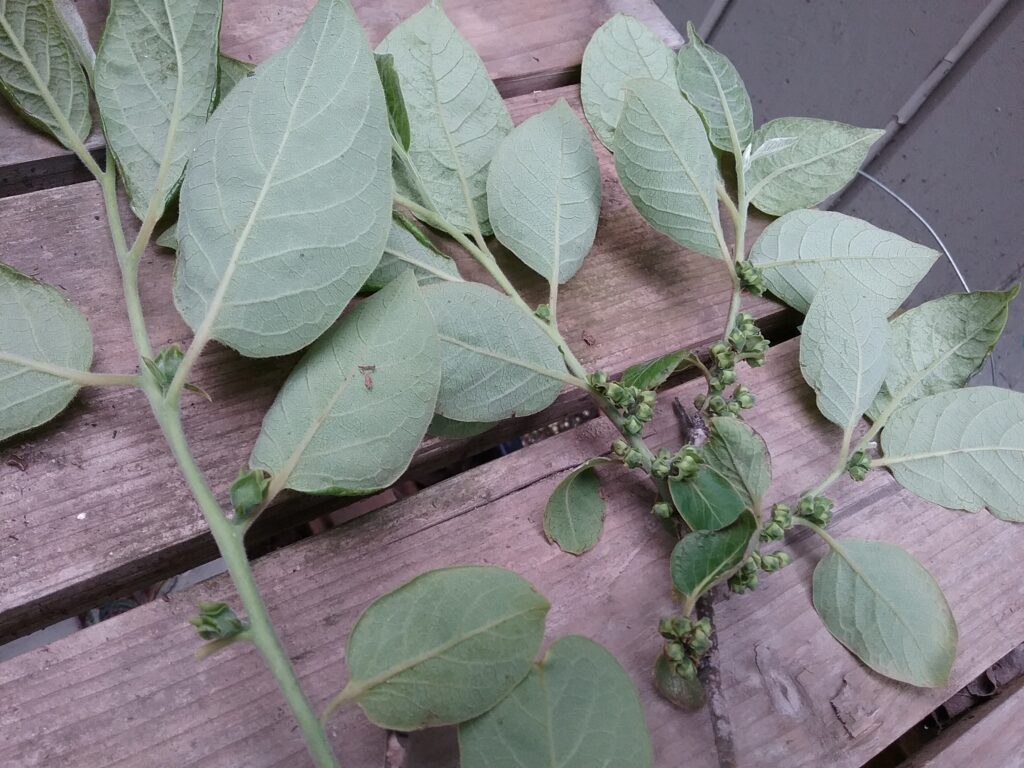
In the male flowers, which are numerous, the stamens are sixteen in number and arranged in pairs; the female flowers are solitary, with traces of stamens, and a smooth ovary with one ovule in each of the eight cells—the ovary is surmounted by four styles, which are hairy at the base. The fruit-stalk is very short, bearing a subglobose fruit an inch in diameter or a bit larger, of an orange-yellow color, ranging to bluish, and with a sweetish astringent pulp.
It is surrounded at the base by the persistent calyx-lobes, which increase in size as the fruit ripens.
The astringency renders the fruit somewhat unpalatable, but after it has been subjected to the action of frost, or has become partially rotted or “bletted” like a medlar, its flavor is improved.[9]

Distribution
The tree is very common in the South Atlantic and Gulf states, and attains its largest size in the basin of the Mississippi River.[9] Its habitat is southern, at the turn of the 20th century it appeared along the coast from Connecticut to Florida; west of the Alleghenies it is found in southern Ohio and along through southeastern Iowa and southern Missouri; and in Louisiana, eastern Kansas and Oklahoma, where it grew tallest.[8]
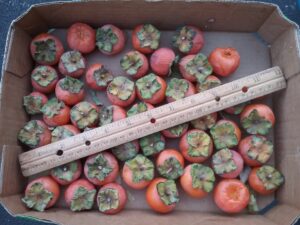
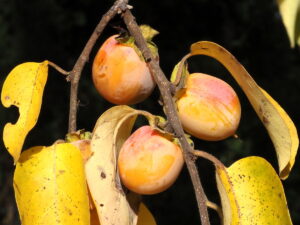
Ploidy, Genetics
There are two races of American persimmon: the tetraploid (60-chromosome) race is centered in the southern Appalachian region, while the hexaploid (90-chromosome) race generally occupies a range north and west of the tetraploid range.[11] The boundary between these races has not been well defined except in Kentucky, where hexaploid persimmons were in the majority in Bullitt County but were not present in Barren County to its south nor Franklin County to its east.[12]
It has been observed that the tetraploid trees tend to grow much taller than the hexaploid trees and have smaller fruit,[13] but no formal research has been done into these differences of traits.
The vast majority of named American Persimmon cultivars are hexaploid, with the only known tetraploid cultivars being Ennis Seedless, Weeping, Sugar Bear, and SFES.[12]
Cultivation
The American persimmon mostly grows wild. Experimental research stations in the 1890s tested native varieties of persimmon, but interest in cultivation of the native persimmon has been limited. Newly planted persimmon trees take a relatively long time to bear fruit. There are many sorts of fruit trees that are easier to grow for commercial purposes. Wild varieties contain a lot of seeds, making the processing of fruit pulp used in food and beverage manufacture more difficult. Cultivation has reduced the number of seeds, and some varieties have developed a very sweet flavor profile without the dreaded astringency of wild persimmon. Harvested fruits are shelf durable.[18]
The tree prefers light, sandy, well-drained soil, but will grow in rich southern bottom lands.[8]
The tree is greatly inclined to vary in the character and quality of its fruit, which varies in size from that of a large cherry to a small apple. Some trees in the south produce fruit that is delicious without the action of the frost, while adjoining trees produce fruit that never becomes edible.[8]
It was brought to England before 1629 and is cultivated, but rarely if ever ripens its fruit. It is easily raised from seed and can also be propagated from stolons, which are often produced in great quantity. The tree is hardy in the south of England and in the Channel Islands.[9]
The persimmon rarely develops any heartwood until it is nearly one hundred years old.
Asian Persimmons ( also called Kaki) (Diospyros kaki)
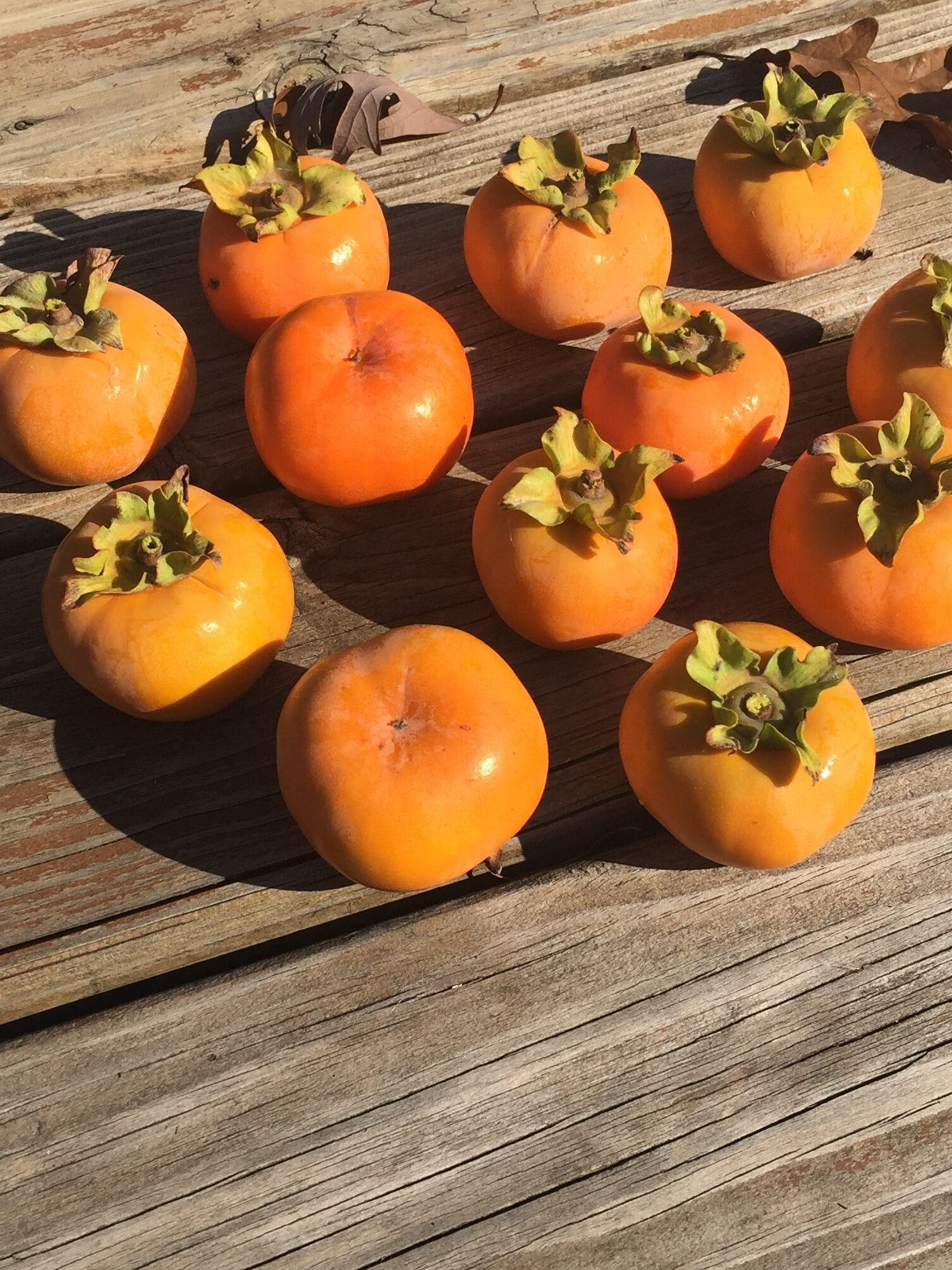
Kakis originated in China, but are now grown throughout Asia, Southeast Asia and Japan. Fruit ripens in the late Autumn and remains on the tree even after all leaves have fallen. If fully ripened, it can be eaten directly from the tree. If ripened off the tree, it can be refrigerated and then eaten weeks later after ripening on the counter. When fully ripe, Fuyu and other varieties have little or no astringency.
Kaki are generally grown in zones 8-10. However, with some protection from cold weather, potted Fuyu persimmon trees can be grown locally in the Chicago area (zone 5) so that excellent fruit can be obtained.
